
Conference:21st IEEE International Symposium on Parallel and Distributed Processing with Applications (IEEE ISPA 2023)
CCF level:CCF C
Categories:Computer Architecture/Parallel and Distributed Computing/Storage Systems
Year:2023
Num:11
Conference time:21-24 December, 2023
1
Title:
A Decentralized Vehicle-to-Vehicle Energy Trading System Based on Efficient Sharding Services
基于高效分片服务的去中心化车对车能源交易系统
Authors:

Key words:
Decentralized Energy Trading, V2V Trading System, Blockchain Sharding, Scalable Consensus, Linear BFT
去中心化能源交易、V2V 交易系统、区块链分片、可扩展共识、线性 BFT
Abstract:
Vehicle-to-vehicle (V2V) energy trading stands as a significant technology, allowing electric vehicles (EVs) to share energy. This balances energy demand and supply, reducing pressure on the power grid. However, two substantial challenges require attention: 1) Creating a standardized protocol universally adoptable by EV manufacturers and energy trading participants to establish a common secure and reliable platform for real-time energy trading between EVs. 2) Determining a fair and transparent pricing and transaction management mechanism, accounting for factors such as energy demand and supply, location, and user preferences. To tackle these hurdles, this paper proposes a decentralized V2V energy trading system (VETS) based on a novel high-performance sharding blockchain framework. VETS incorporates a standard energy trading management protocol, achieving trustless and transparent transaction processing. It employs a blockchain sharding and parallel architecture for high transaction throughput, catering to a large number of EVs. Furthermore, an efficient consensus algorithm is developed to minimize service delays and adapt to real-time transaction demands. A practical testbed operationalizes VETS, facilitating experimental analysis within a real-world cloud environment.
车对车 (V2V) 能源交易是一项重要技术,它允许电动汽车 (EV) 共享能源。这平衡了能源需求和供应,减轻了电网的压力。然而,有两个重大挑战需要注意:1) 创建一个由电动汽车制造商和能源交易参与者普遍采用的标准化协议,以建立一个通用的安全可靠的电动汽车实时能源交易平台。2) 确定一个公平透明的定价和交易管理机制,考虑能源需求和供应、位置和用户偏好等因素。为了解决这些障碍,本文提出了一种基于新型高性能分片区块链框架的去中心化 V2V 能源交易系统 (VETS)。VETS 采用了标准的能源交易管理协议,实现了无需信任和透明的交易处理。它采用区块链分片和并行架构来实现高交易吞吐量,满足大量电动汽车的需求。此外,还开发了一种高效的共识算法,以最大限度地减少服务延迟并适应实时交易需求。实用的测试平台使 VETS 得以运作,从而促进了在真实云环境中的实验分析。
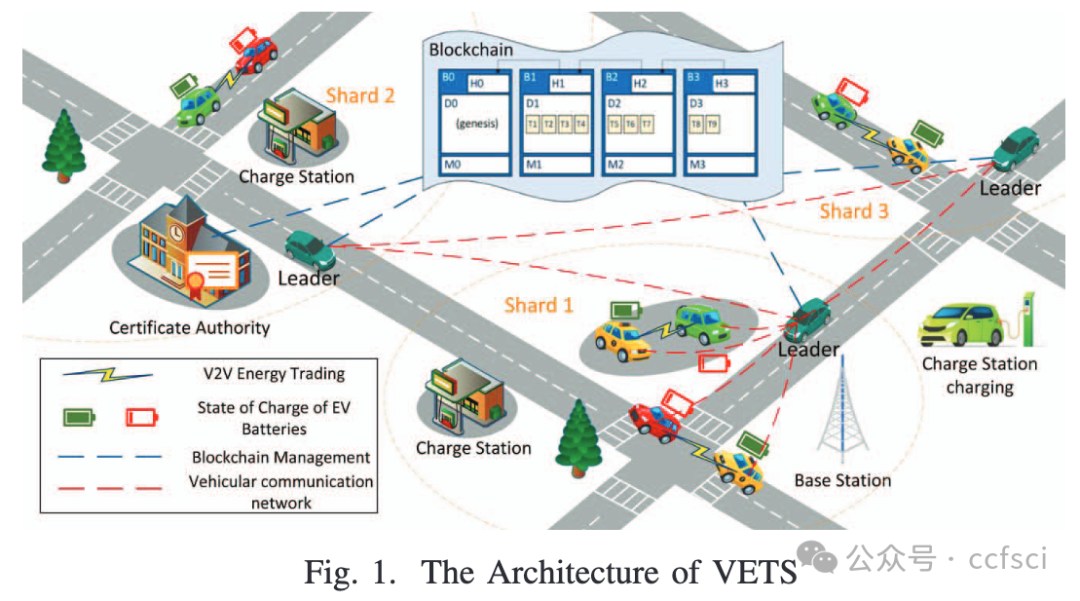
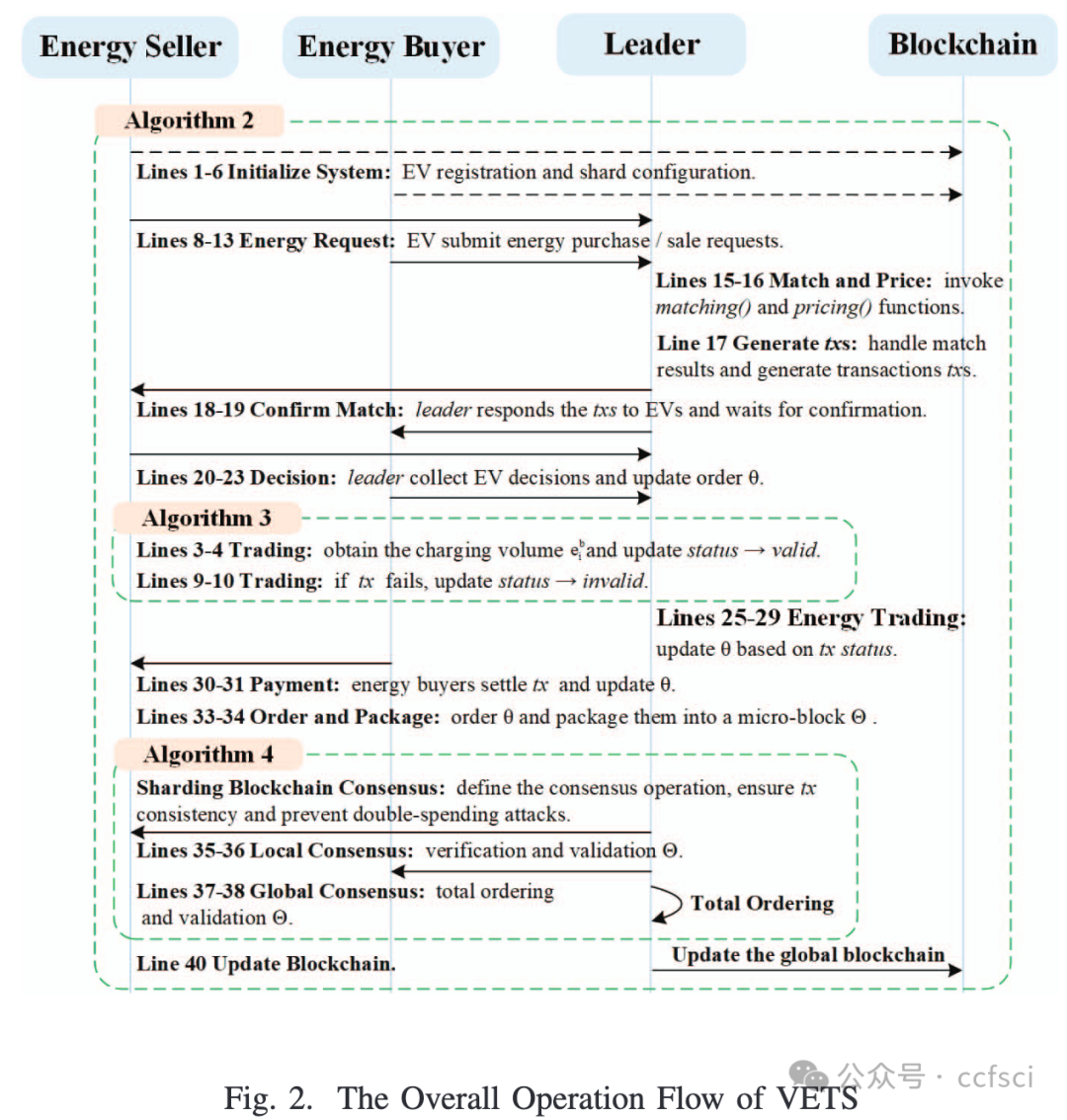
Pdf link:
https://ieeexplore.ieee.org/document/10491734
2
Title:
BILAM: A BiLSTM-Based Model for Detecting Phishing Scams in Ethereum
BILAM:基于 BiLSTM 的以太坊钓鱼诈骗检测模型
Authors:

Key words:
Blockchain, Ethereum, Phishing scam, BiLSTM
区块链、以太坊、网络钓鱼诈骗、BiLSTM
Abstract:
With the rapid advancement of blockchain technology, cryptocurrencies based on blockchain have become a hot topic. However, various issues accompany this development, with phishing scams emerging as a severe financial crime within the blockchain ecosystem, causing significant economic losses to both blockchain platforms and users. In order to address this threat, this essay proposes a phishing scam account identification model based on Bidirectional Long Short-Term Memory Networks (BiLSTM) named BILAM. The model has been validated on the Ethereum platform and has been proven to be effective.This study proposes a novel approach by using transaction records for the first time to construct a time series, and it leverages the BILAM model to learn latent information. Experimental results demonstrate the effectiveness of this method in constructing transaction time series. Moreover, the BILAM model shows excellent performance, with its predictive accuracy significantly surpassing other models, particularly achieving an AUC index of 92.8%.
随着区块链技术的快速发展,基于区块链的xx货币成为热门话题。然而,区块链技术的发展也带来了各种问题,钓鱼诈骗已成为区块链生态系统中严重的金融犯罪,给区块链平台和用户造成了重大的经济损失。为了应对这一威胁,本文提出了一种基于双向长短期记忆网络(BiLSTM)的钓鱼诈骗账户识别模型BILAM。该模型已在以太坊平台上进行了验证,并被证明是有效的。本研究首次提出了一种使用交易记录构建时间序列的新方法,并利用BILAM模型来学习潜在信息。实验结果证明了该方法在构建交易时间序列方面的有效性。此外,BILAM模型表现出优异的性能,其预测准确率显著超越其他模型,尤其是达到了92.8%的AUC指数。
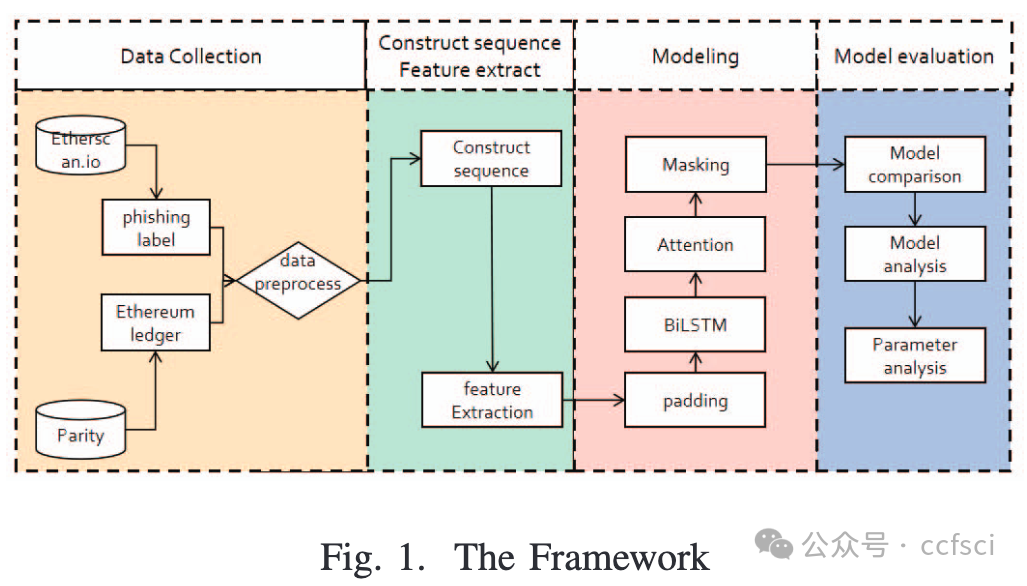
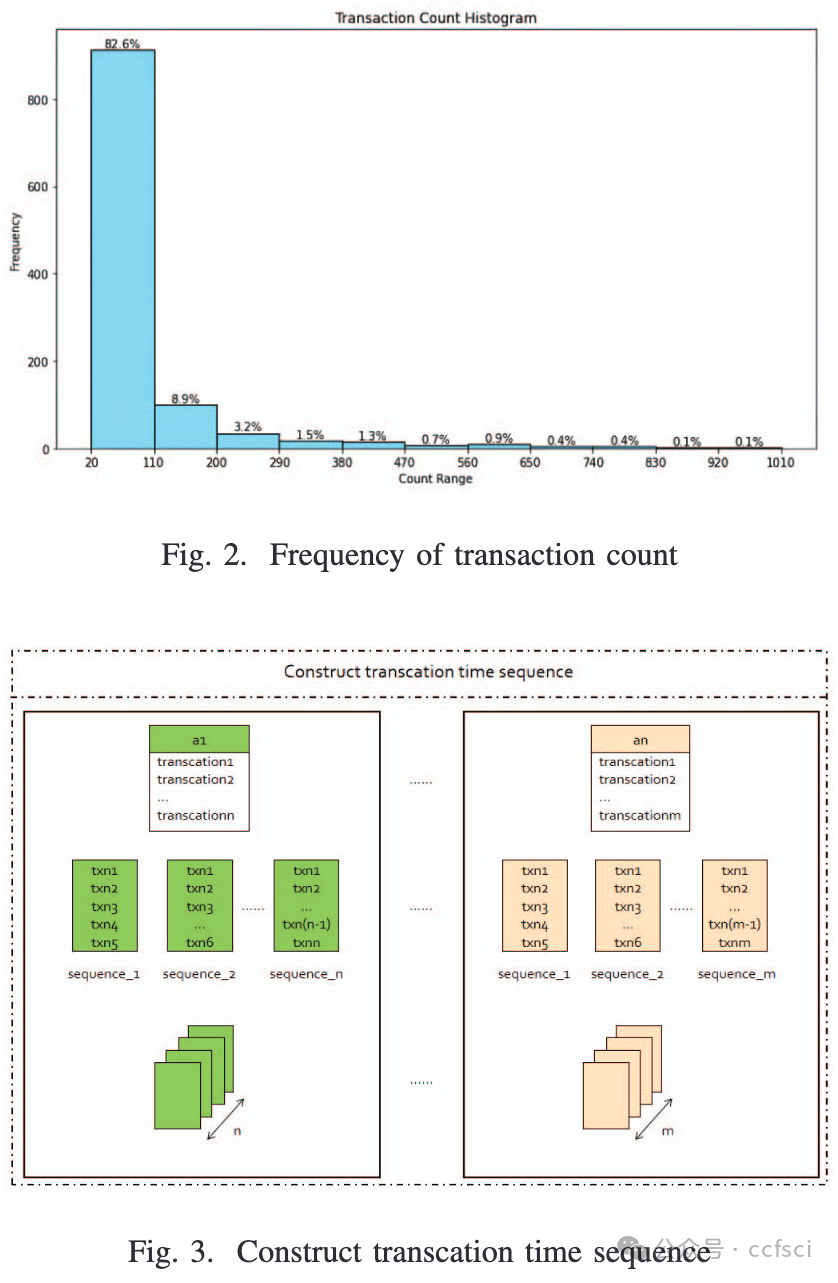
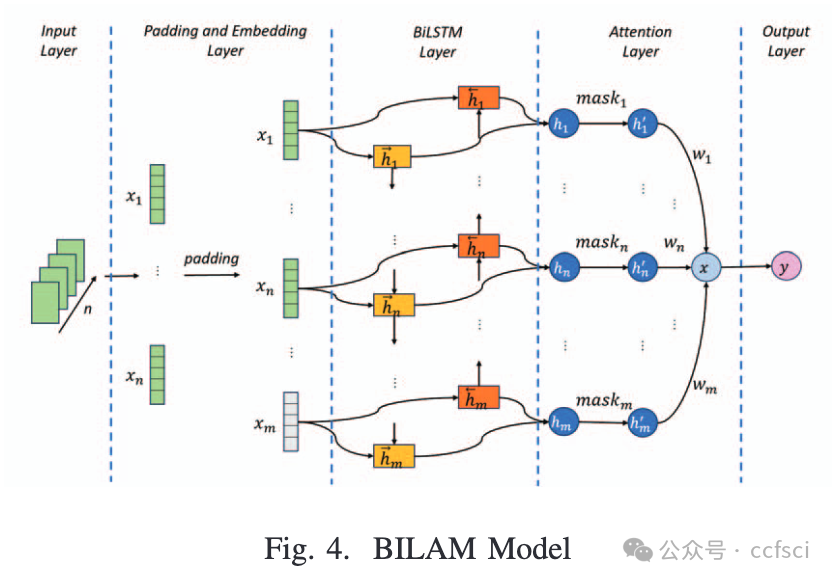
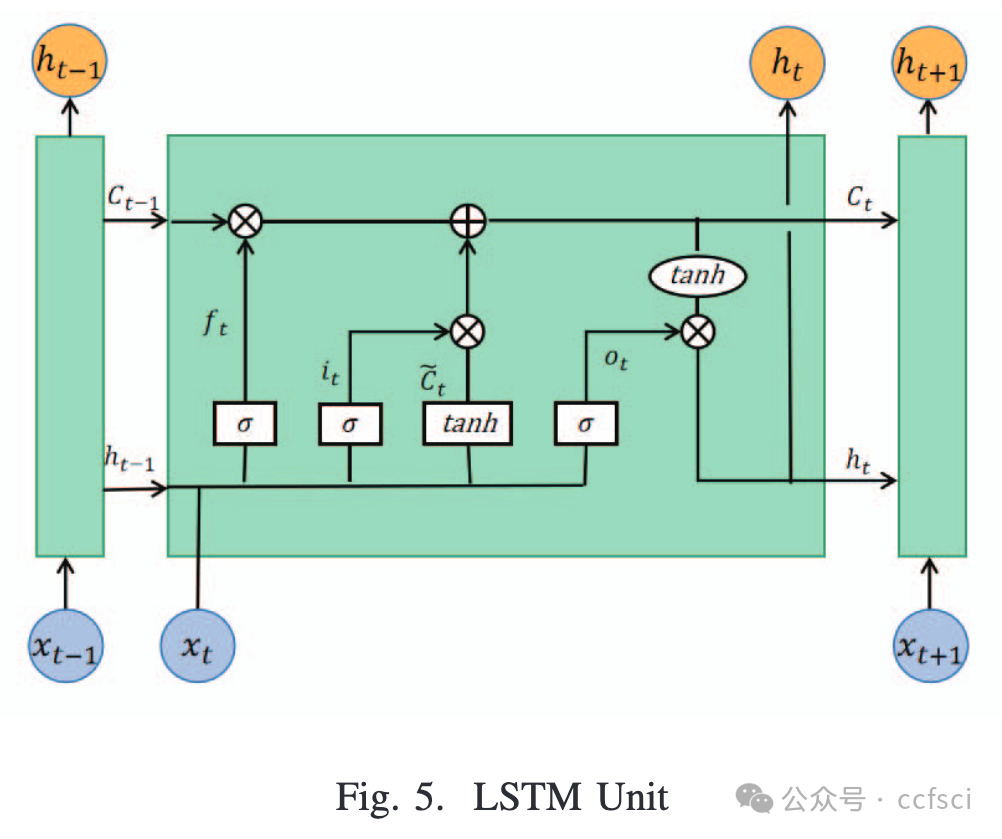
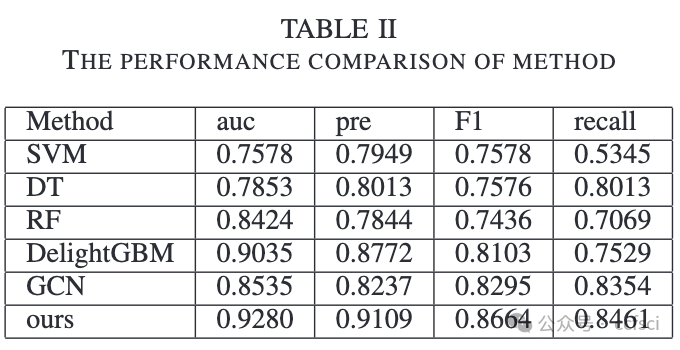
Pdf link:
https://ieeexplore.ieee.org/document/10491655
3
Title:
Reducing Latency of DAG-based Consensus in the Asynchronous Setting via the UTXO Model
通过 UTXO 模型减少异步设置中基于 DAG 的共识的延迟
Authors:

Key words:
Consensus, Byzantine Fault Tolerant, UTXO
共识、拜占庭容错、UTXO
Abstract:
DAG-based consensus has attracted significant interest due to its high throughput in asynchronous network settings. However, existing protocols such as DAG-rider (Keidar et al., PODC 2021) and “Narwhal and Tusk” (Danezis et al., Eurosys 2022) face two undesired practical issues: (1) high transaction latency and (2) high cost to verify transaction outcomes. To address (1), this work introduces a novel commit rule based on the Unspent Transaction Output (UTXO) Data Model, which allows a node to predict the transaction results before triggering the commitment. We propose a new consensus algorithm named “Board and Clerk”, which reduces the transaction latency by half for roughly 50% of transactions according to our experiments. As the tolerance for faults escalates, more transactions can partake in this latency reduction. In addition, we also propose the Hyper-Block Model with two flexible proposing strategies to tackle (2): blocking and non-blocking. Using our proposed strategies, each node first predicts the transaction results if its proposal is committed and packs this result as a commitment in its proposal. The hyper-block packs the proposal’s signature, and the consensus layer outputs to prove the transaction results.
基于 DAG 的共识因其在异步网络设置中的高吞吐量而引起了广泛关注。然而,现有的协议,如 DAG-rider(Keidar 等人,PODC 2021)和“Narwhal and Tusk”(Danezis 等人,Eurosys 2022)面临两个不受欢迎的实际问题:(1)高交易延迟和(2)验证交易结果的成本高。为了解决 (1),这项工作引入了一种基于未使用交易输出 (UTXO) 数据模型的新型提交规则,该规则允许节点在触发承诺之前预测交易结果。我们提出了一种名为“Board and Clerk”的新共识算法,根据我们的实验,该算法将大约 50% 的交易的交易延迟减少了一半。随着对故障容忍度的提高,更多的交易可以参与这种延迟的减少。此外,我们还提出了超块模型,该模型有两种灵活的提议策略来解决 (2):阻塞和非阻塞。使用我们提出的策略,每个节点首先预测其提案被提交时的交易结果,并将此结果作为承诺打包在其提案中。超级区块打包提案的签名,共识层输出以证明交易结果。
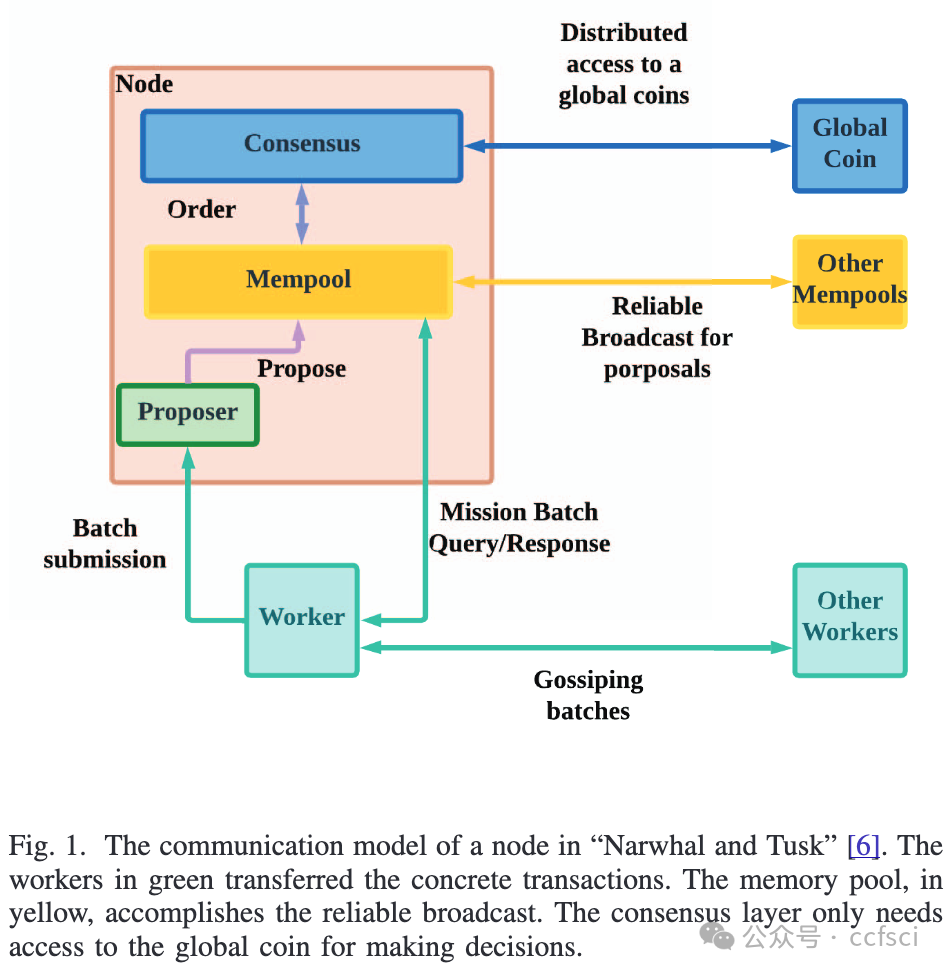
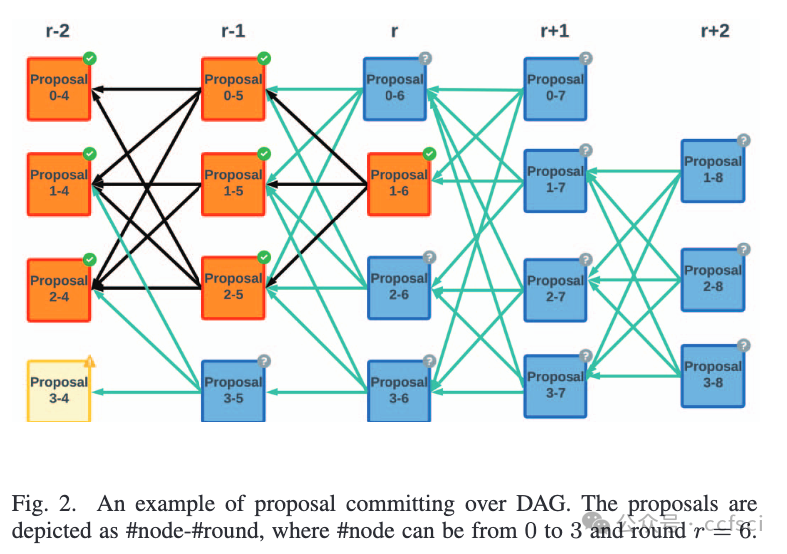
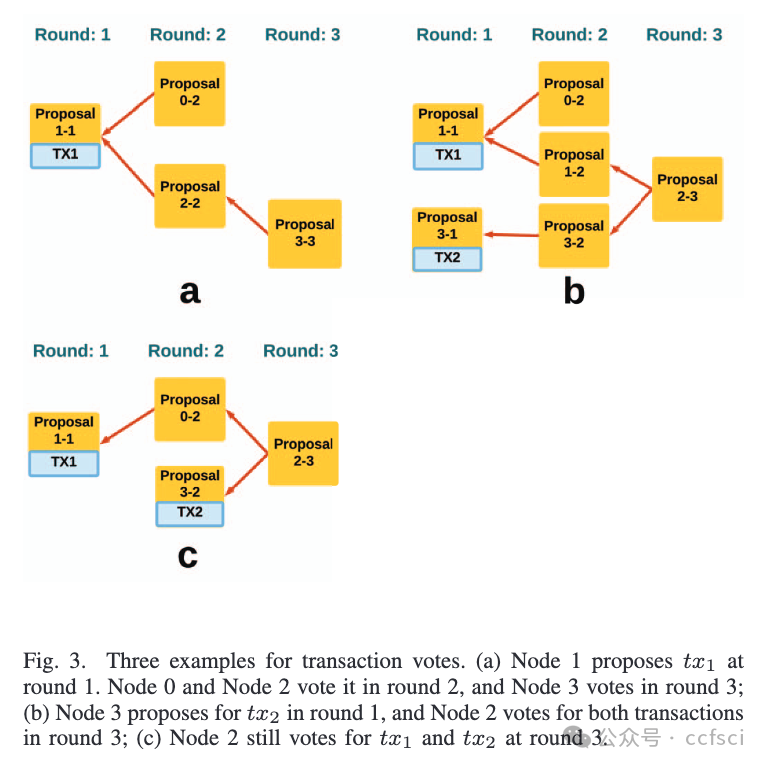
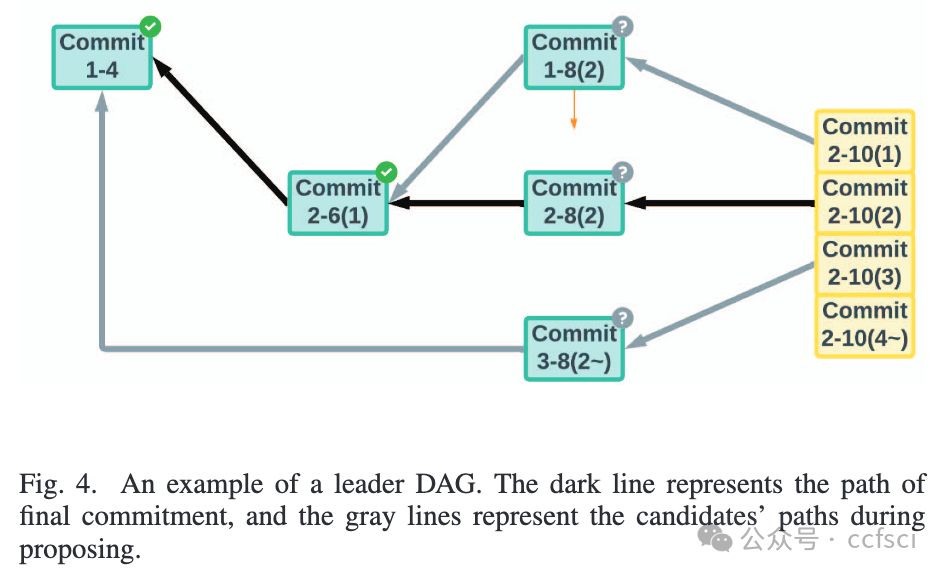
Pdf link:
https://ieeexplore.ieee.org/document/10491862
4
Title:
EBFT: Efficient BFT Consensus through Shortcut Replies
EBFT:通过快捷回复实现高效的 BFT 共识
Authors:

Key words:
BFT, Consensus, Byzantine, PBFT
BFT,共识,拜占庭,PBFT
Abstract:
As the core building block of blockchain technology, Byzantine Fault Tolerance (BFT) consensus has gathered renewed attention during the past decade. A large number of BFT consensus protocols have been proposed since its inception in the 1980s, the best-known of which is Practical Byzantine Fault Tolerance (PBFT). Generally speaking, PBFT consists of two sub-protocols: normal-case protocol and view-change protocol. However, it requires 7δ for a client to commit a request in the normal case, where δ represents the actual network delay. If a request happens to go through the view change process, it will take additional 7δ for a client to commit a request. To reduce the consensus latency, we propose a novel BFT consensus protocol named EBFT, which introduces the shortcut replies to the consensus design. With these shortcut replies, EBFT reduces the normal-case latency and view-change latency to 5δ and 2δ, respectively. Extensive experiments are conducted to evaluate EBFT, whose results demonstrate its effectiveness.
作为区块链技术的核心组成部分,拜占庭容错 (BFT) 共识在过去十年中重新受到关注。自 1980 年代诞生以来,大量 BFT 共识协议被提出,其中最著名的是实用拜占庭容错 (PBFT)。一般而言,PBFT 包含两个子协议:正常情况协议和视图更改协议。然而,在正常情况下,客户端提交请求需要 7δ,其中 δ 表示实际网络延迟。如果请求恰好经过视图更改过程,客户端提交请求将需要额外的 7δ。为了减少共识延迟,我们提出了一种名为 EBFT 的新型 BFT 共识协议,该协议在共识设计中引入了快捷回复。借助这些快捷回复,EBFT 将正常情况延迟和视图更改延迟分别降低至 5δ 和 2δ。我们进行了大量实验来评估 EBFT,结果证明了其有效性。
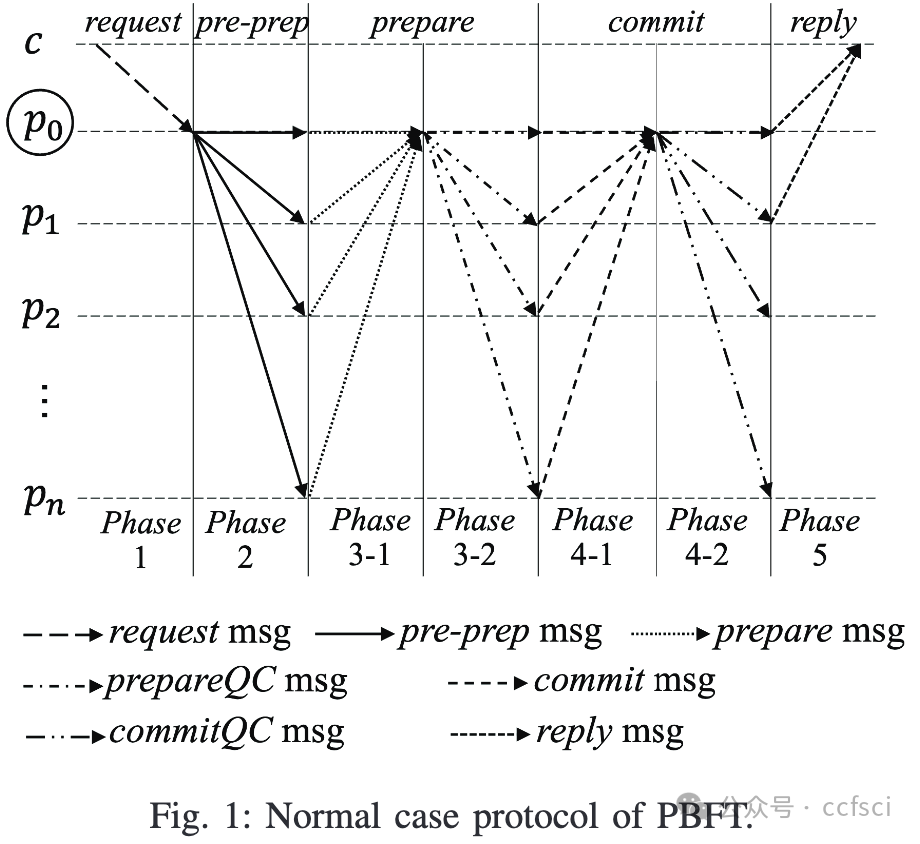
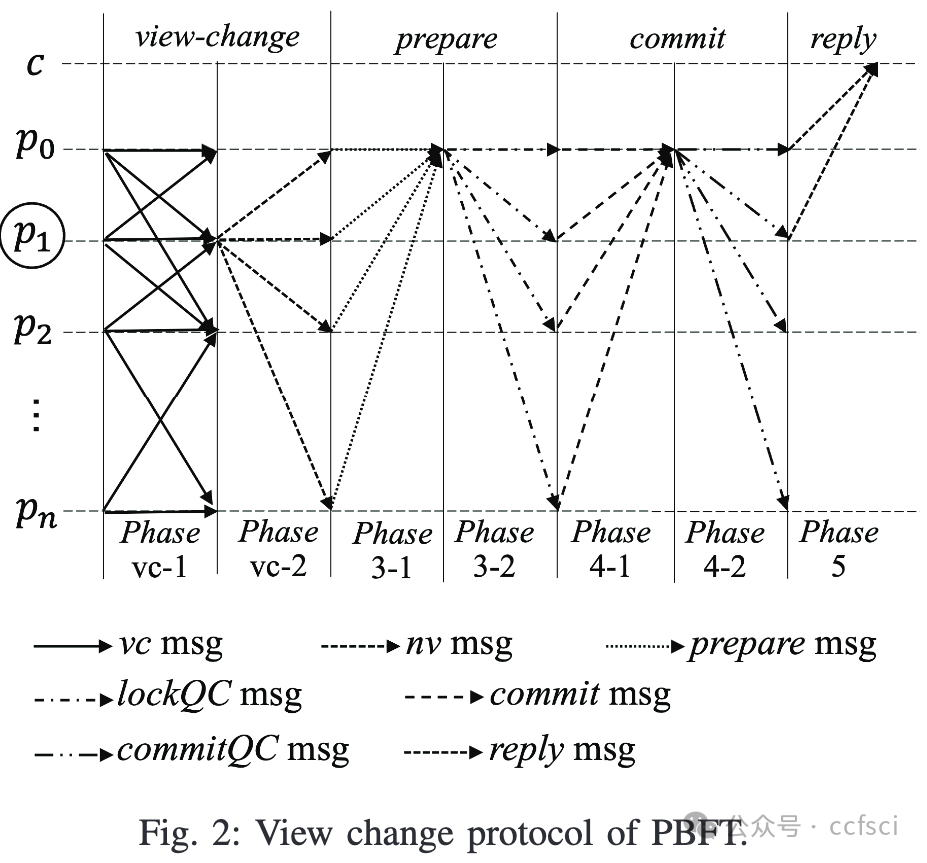
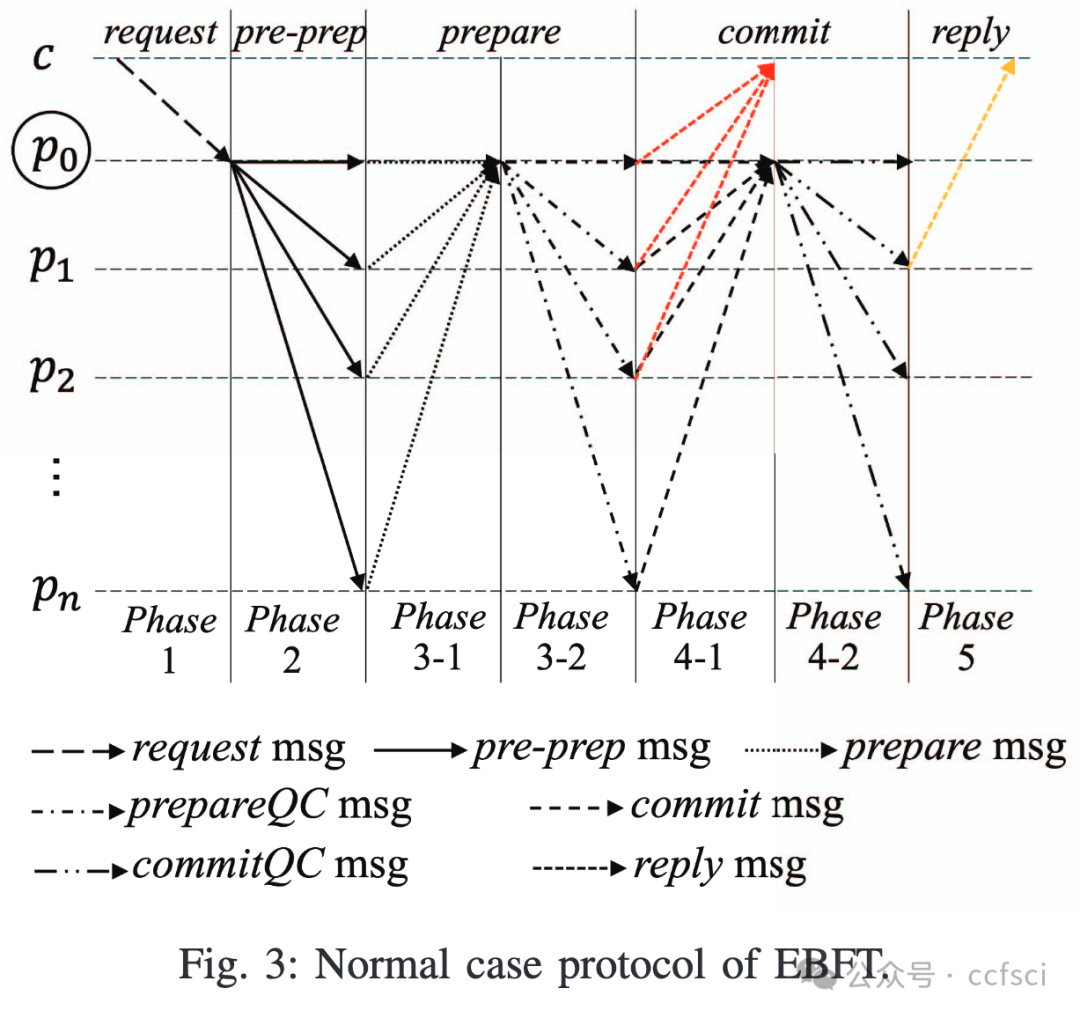
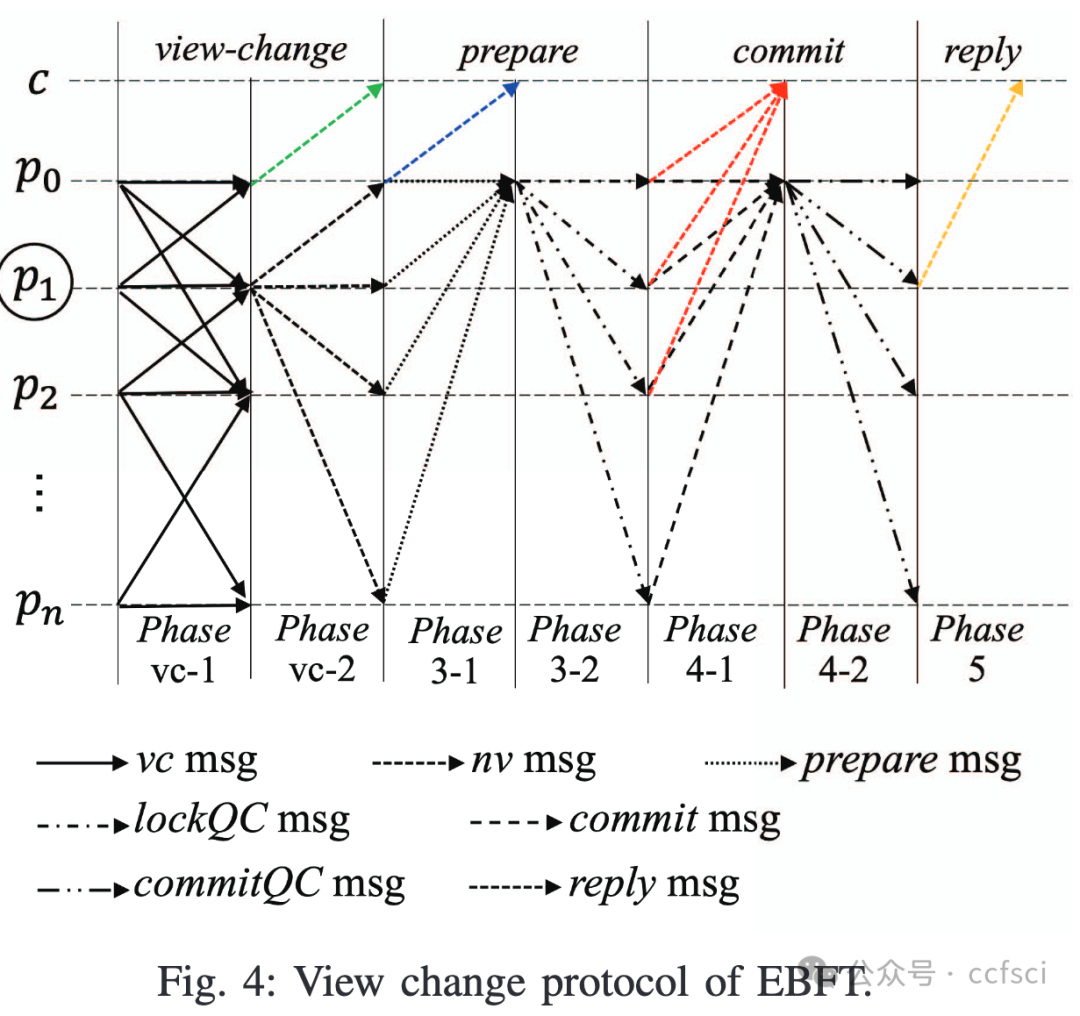
Pdf link:
https://ieeexplore.ieee.org/document/10491722
5
Title:
Secure, Efficient, and Privacy-Protecting One-to-Many Cross-Chain Shared Data Consistency Audit
安全、高效、保护隐私的一对多跨链共享数据一致性审计
Authors:

Key words:
blockchain, data consistency auditing, one-to-many, cross-chain, data sharing
区块链、数据一致性审计、一对多、跨链、数据共享
Abstract:
In recent years, blockchain has been introduced into more and more research fields and is expected to realize data sharing among multiple parties. To solve this problem, researchers are working to realize cross-chain collaboration and interaction. There is a lack of research on the consistency of cross-chain shared data. Based on the supervision chain, this paper proposes a cross-chain shared data consistency audit scheme that is safe, efficient, and can protect data privacy. The proposed scheme includes a sender and multiple receivers. If all receivers correctly and completely store the data sent by the sender, their data is consistent and the same as the sender. The supervision chain verifies the data consistency of multiple receivers through batch processing to achieve efficient auditing. In addition, the scheme ensures data privacy in the cross-chain and audit processes through the RSA encryption algorithm and the intractability of the DL problem. Finally, the security analysis shows the correctness and security of the proposed scheme. Theoretical and experimental analysis shows the efficiency of the scheme.
近年来,区块链被引入到越来越多的研究领域,有望实现多方数据共享。针对该问题,研究者们致力于实现跨链协作与交互,但跨链共享数据一致性的研究尚不足。本文基于监督链,提出一种安全、高效、能保护数据隐私的跨链共享数据一致性审计方案。所提方案包括一个发送者和多个接收者,若所有接收者都正确、完整地存储了发送者发送的数据,则其数据是一致的且与发送者相同。监督链通过批处理方式验证多个接收者的数据一致性,实现高效的审计。此外,该方案通过RSA加密算法以及DL问题的难解性保证了跨链和审计过程中的数据隐私。最后,安全性分析表明了所提方案的正确性和安全性。理论与实验分析表明了方案的有效性。


Pdf link:
https://ieeexplore.ieee.org/document/10491782
6
Title:
Software and Hardware Processing Method for Blockchain Light Node SPV Verification
区块链轻节点SPV验证的软硬件处理方法
Authors:

Key words:
Blockchain SPV; Coprocessor; Pipeline; Double SHA256
区块链 SPV;协处理器;流水线;DoubleSHA256
Abstract:
With the application of blockchain light nodes in embedded devices, how to alleviate computing pressure brought by complex operations such as transaction’s SPV Verification for CPU of embedded devices and improve the performance of devices in these aspects has gradually become a research topic in industry and academia. This paper proposes a series of methods to improve the performance of blockchain SPV Verification from the perspectives of system architecture and hash computing unit: (1) According to the computational characteristics of SPV Verification, this paper customizes macro instructions and microinstructions for the coprocessor to meet the requirements of flexibility; The built-in dedicated cache holds transaction data fetched from external memory and intermediate data generated by internal Hash Computing Unit, which not only prepares transaction data for hash computation, but also avoids frequent access to the bus and external memory. (2) Techniques like two-round unfolded computing, timing-balanced pipeline architecture and optimized adders are adopted to improve the performance of SHA256 computation. (3) When double hash computing is required for transactions, Hash Computing Unit can directly perform the second hash computation based on the first hash computation, reducing the frequency of accessing to external memory, thereby improving the performance to a certain extent. Through these methods, the performance of the hardware coprocessor for SVP verification of transactions is more than double that of traditional solutions.
随着区块链轻节点在嵌入式设备中的应用,如何缓解交易的SPV验证等复杂操作给嵌入式设备CPU带来的计算压力,提升设备在这些方面的性能逐渐成为工业界和学术界的研究课题。本文从体系架构和哈希计算单元的角度提出了一系列提升区块链SPV验证性能的方法:(1)根据SPV验证的计算特点,为协处理器定制宏指令和微指令,满足灵活性的要求;内置专用缓存保存从外部存储器抓取的交易数据以及内部哈希计算单元产生的中间数据,既为交易数据进行哈希计算做好准备,又避免了频繁访问总线和外部存储器。(2)采用两轮展开计算、时序平衡的流水线架构、优化加法器等技术,提升SHA256计算性能。(3)当交易需要进行双重哈希计算时,哈希计算单元可以直接在第一次哈希计算的基础上进行第二次哈希计算,减少访问外部存储器的次数,从而在一定程度上提高性能。通过这些方法,硬件协处理器对交易的SVP验证性能比传统方案提高一倍以上。

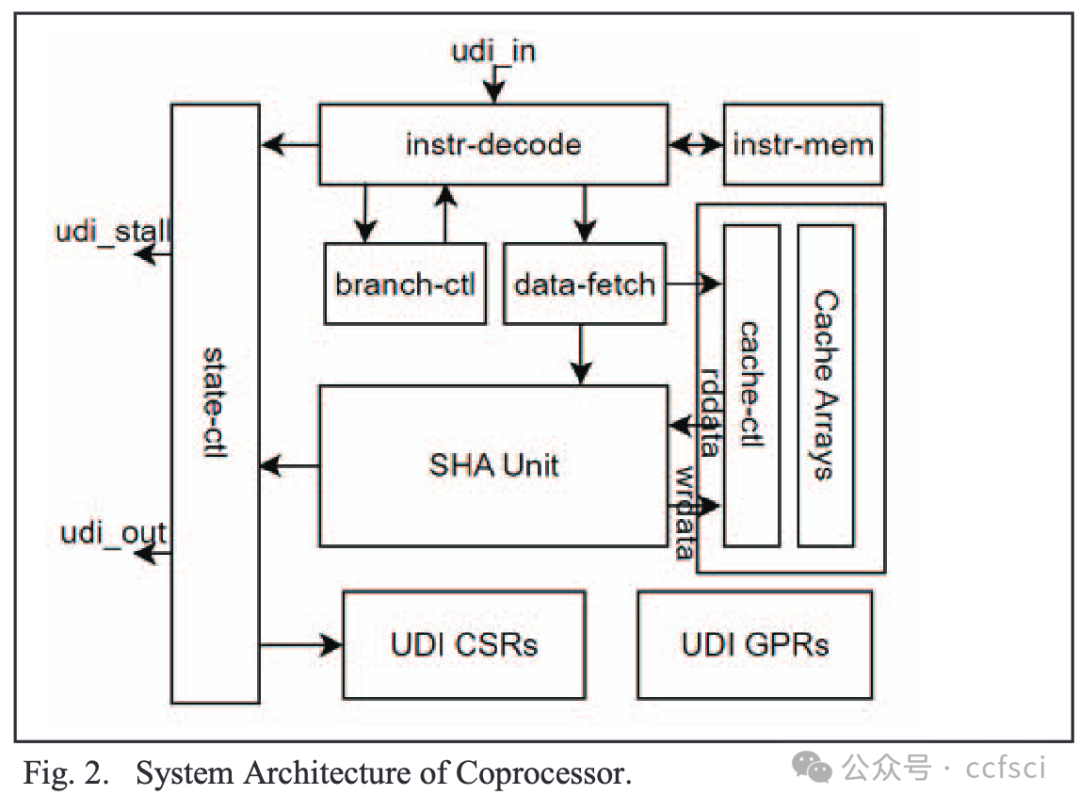

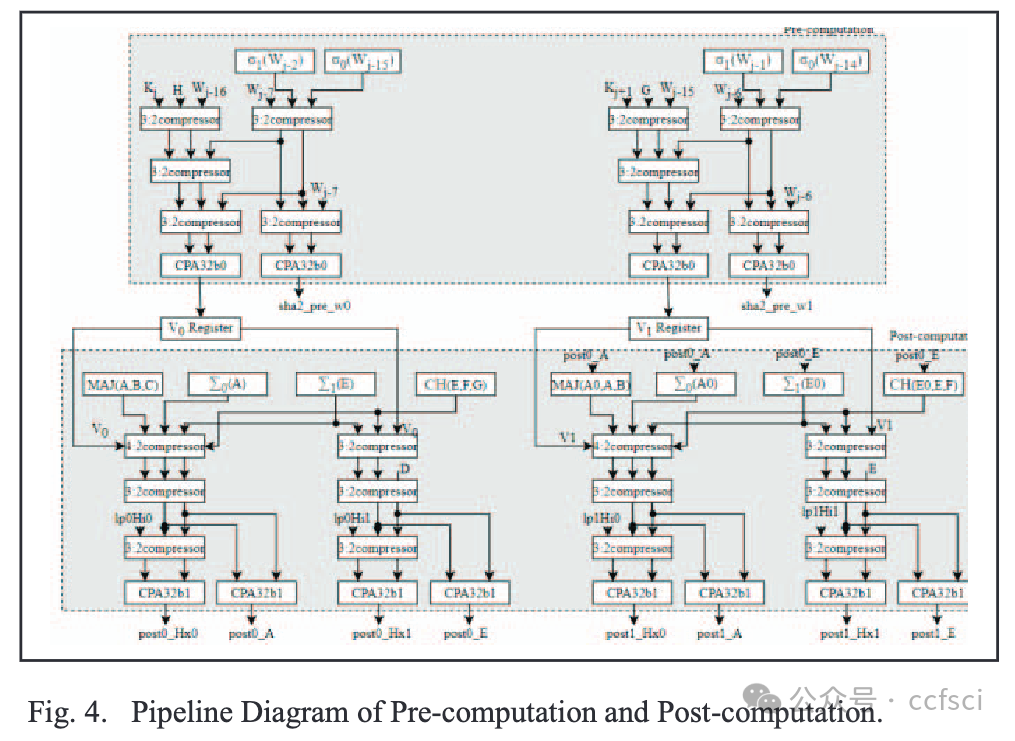

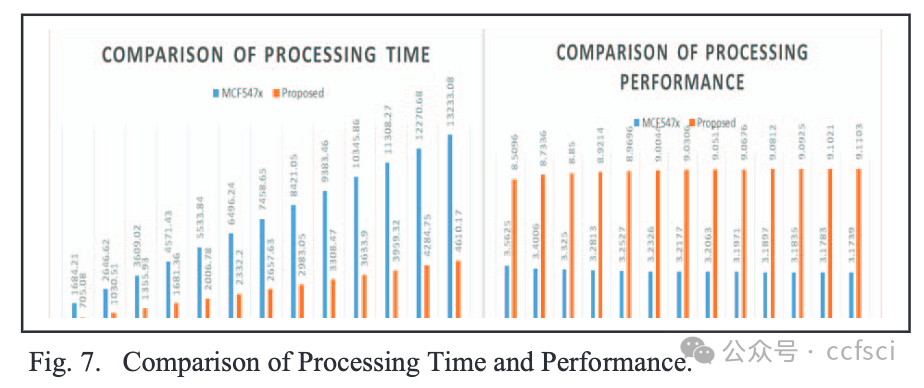
Pdf link:
https://ieeexplore.ieee.org/document/10491686
篇幅有限,下篇文章将继续分享剩余论文

关注我们,持续接收区块链最新论文
洞察区块链技术发展趋势
Follow us to keep receiving the latest blockchain papers
Insight into Blockchain Technology Trends
























 1119
1119

 被折叠的 条评论
为什么被折叠?
被折叠的 条评论
为什么被折叠?










